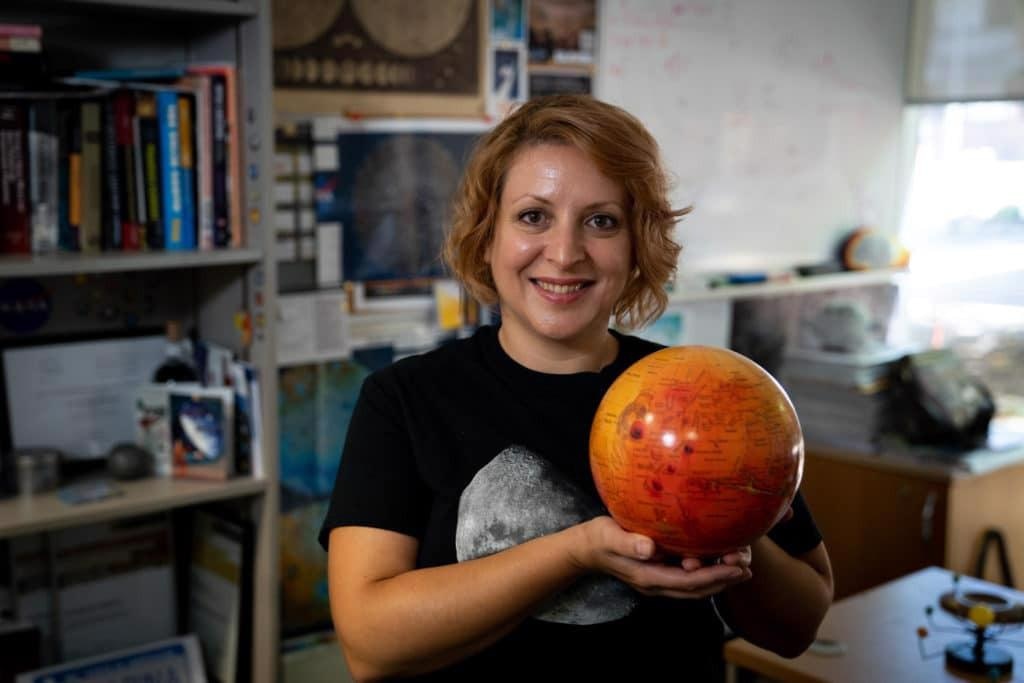Planetary scientist Katarina Miljkovic is discussing how she uses “space rocks” to understand how planets form. She’s available for interview and is giving free public talks this week in North Sydney, Wollongong, and Canberra.
 Associate Professor Katarina Miljkovic holding a model of Mars in her office at Curtin University. Image Credit: Take 2 STEM.
Associate Professor Katarina Miljkovic holding a model of Mars in her office at Curtin University. Image Credit: Take 2 STEM.
The planets in our solar system are vastly different although they all formed from the same cloud of gas and dust around a star – our sun. Why is this?
Associate Professor Katarina Miljkovic works at Curtin University’s Space Science and Technology Centre and School of Earth and Planetary Sciences.
She thinks the answers lie in studying how asteroids, comets and meteors bombarded the planets in the past, changing the surface conditions.
The Earth is hit by a few larger objects, and tens of thousands of smaller meteors per day, although small events largely go unnoticed. Yet it doesn’t take a huge rock to cause a massive impact.
The asteroid that wiped out the dinosaurs on Earth 66 million years ago was only 10-15 km in diameter.
“Space is not empty, and we always have rocks from space hitting planetary bodies,” says Katarina.
“Tiny collisions and large-scale impact events helped shape the planets and Universe as we know it.”
Katarina will talk about impact events, planetary evolution and more in her free talks to schools, universities, and the general public around Australia.
She uses computer modelling to understand the mechanics of how large rocks hit the surface of planets, setting off quakes and forming craters. In her talks, she will explain how her modelling compares with the data she gets from billion-dollar space missions.
“Receiving data from space is a heck of a job,” according to the planetary scientist, who often receives data that no-one has seen before.
Most recently Katarina has been working with the NASA InSight mission to analyse data about quakes from an instrument onboard a robotic explorer parked on the surface of Mars.
She hopes the data will also give important information about the interior structure of the planet.
Katarina’s talks are part of her responsibilities after winning the 2022 Women in Physics Lectureship. The lectureship is awarded annually by the Australian Institute of Physics to recognise significant contributions by a woman to advancing physics.
Katarina’s talk tour starts at the end of May and runs through to September at venues in NSW, ACT, QLD, VIC, TAS, SA, and WA.
NSW and ACT Tour Dates and Venues
Katarina will be giving free public talks on:
- Tuesday 31 May at Macquarie University, North Ryde, 6 – 7 pm.
- Wednesday 1 June at Science Space, North Wollongong, 6.30 – 7.30 pm.
- Thursday 2 Jun at UNSW Canberra, Canberra, 5.30 – 7 pm.
She will also be giving private talks in schools in Northern Sydney, Wollongong, and Canberra.